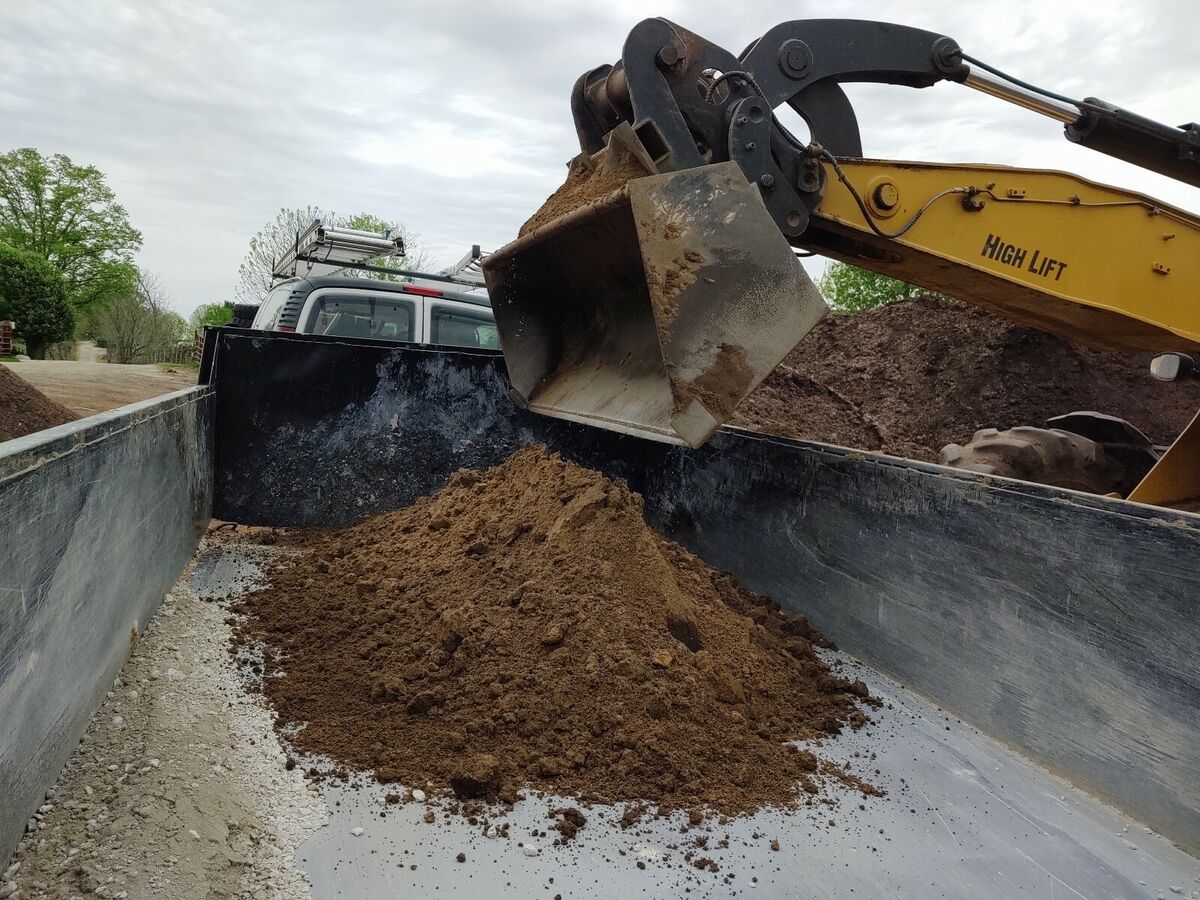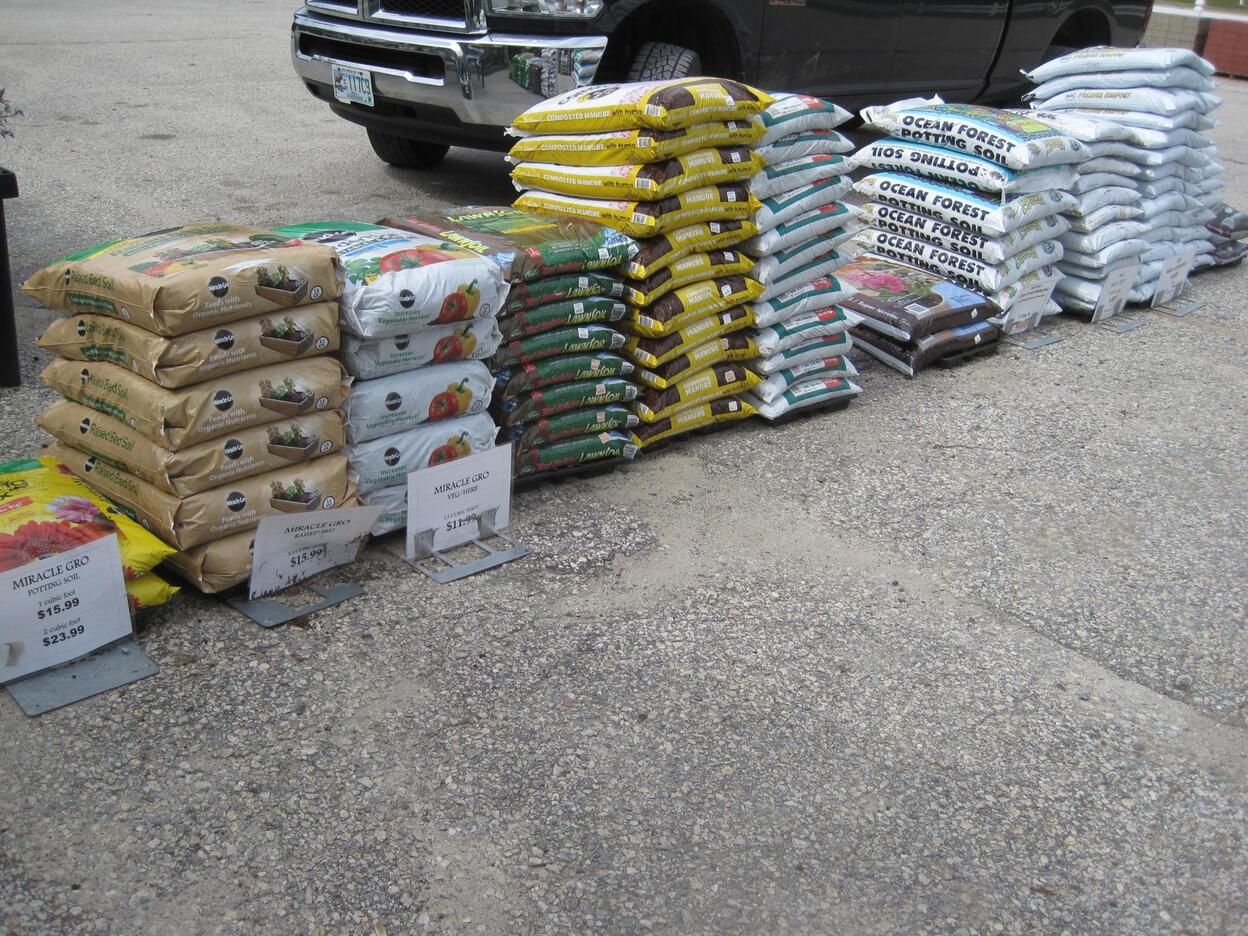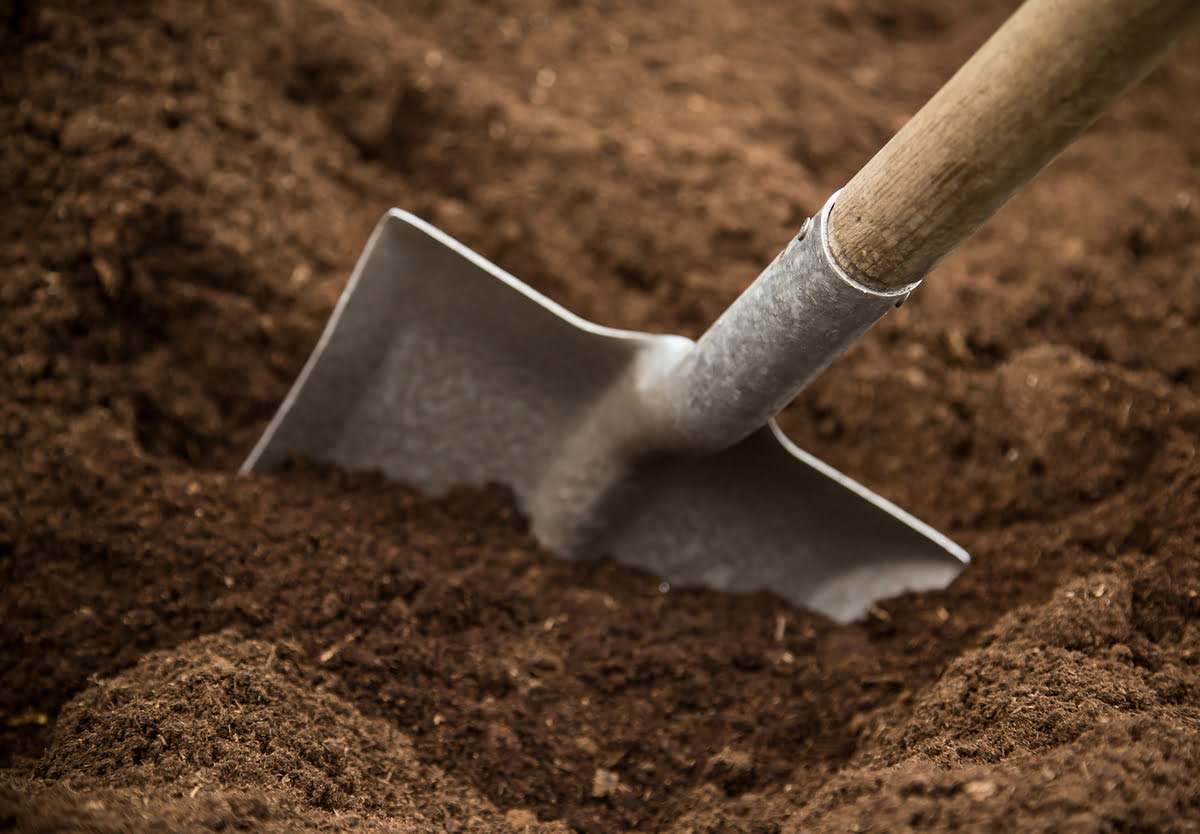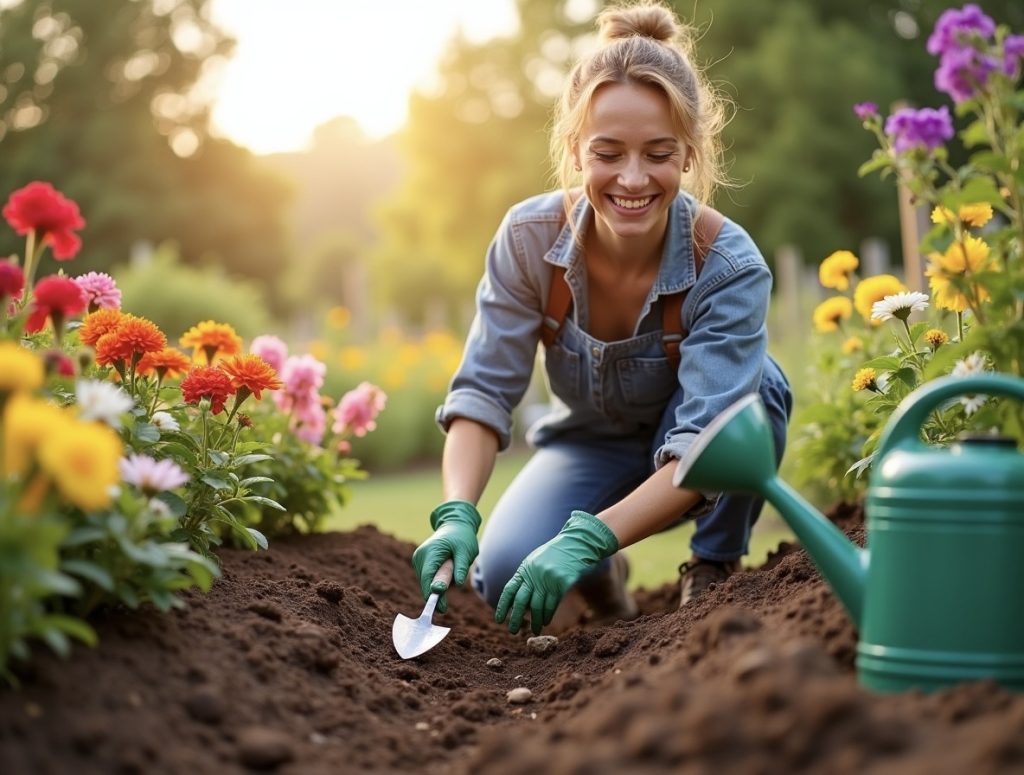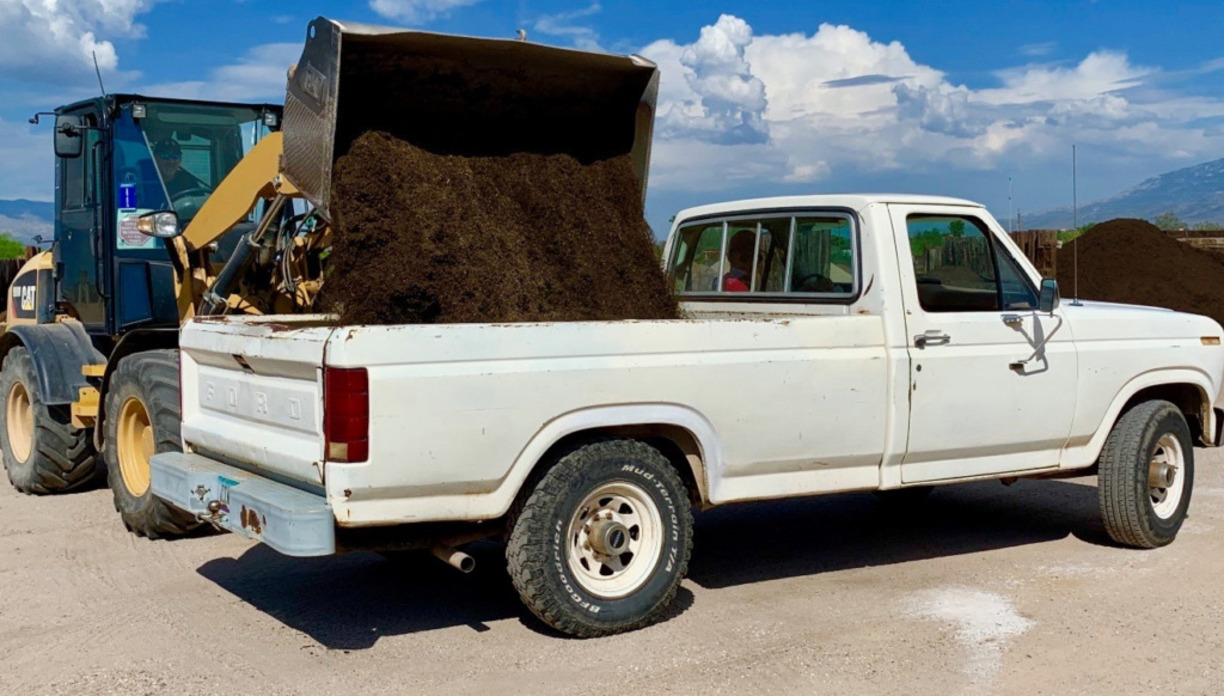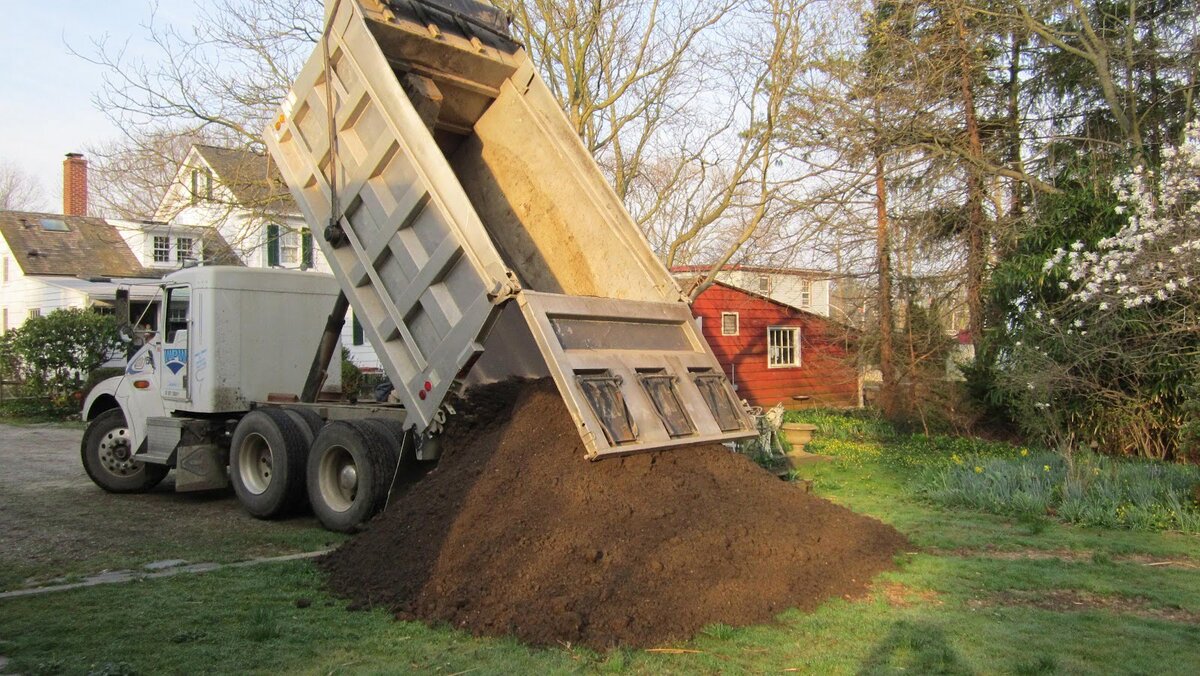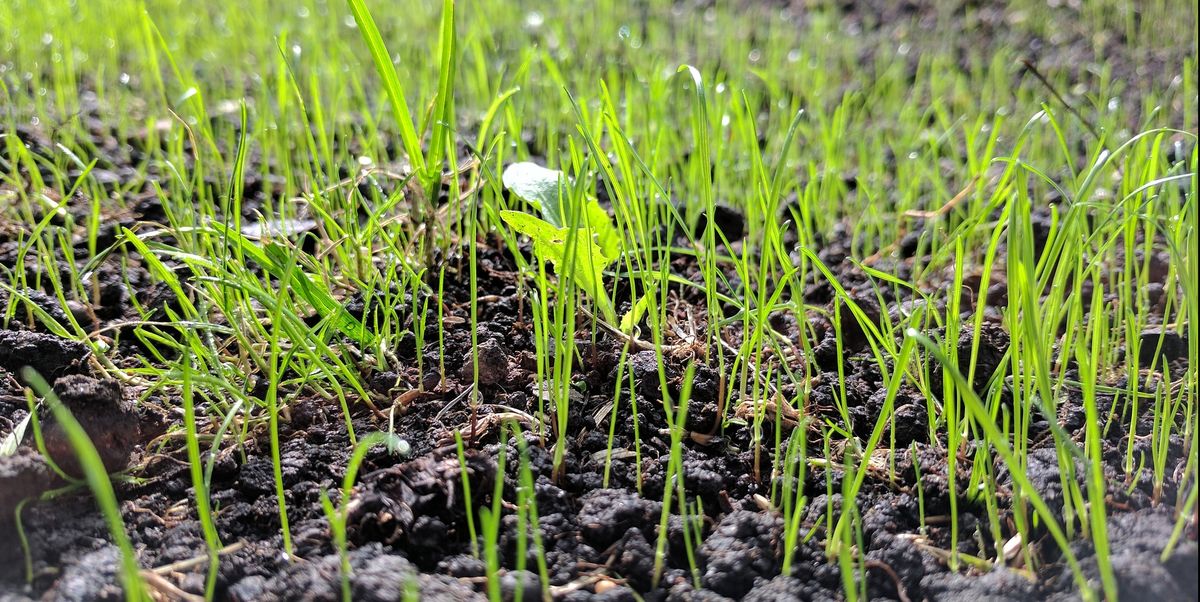Home>Gardening Basics>Understanding Soil>How Much Is One Yard Of Topsoil


Understanding Soil
How Much Is One Yard Of Topsoil
Modified: February 10, 2024
Discover the importance of understanding soil and learn how much one yard of topsoil can enhance your gardening or landscaping project.
(Many of the links in this article redirect to a specific reviewed product. Your purchase of these products through affiliate links helps to generate commission for Chicagolandgardening.com, at no extra cost. Learn more)
Table of Contents
Introduction
Welcome to the world of soil, where every inch beneath our feet hides a hidden treasure of life and fertility. Soil plays a vital role in sustaining life on Earth. It is not just a mere mixture of minerals and organic matter, but a complex and dynamic ecosystem that supports plant growth, filters water, and provides a habitat for countless organisms. Within the realm of soil lies a crucial layer called topsoil, which is the focus of our exploration.
Topsoil refers to the uppermost layer of soil, typically ranging from 2 to 8 inches in depth. It has a higher concentration of organic matter, nutrients, and beneficial microorganisms, making it the most fertile and productive part of the soil profile. Topsoil is a precious resource for gardeners, landscapers, farmers, and anyone seeking to cultivate plants or improve their outdoor spaces.
To fully delve into the topic of topsoil, it’s important to understand how measurements are used in the context of soil quantity. The term “yard” is commonly used to quantify the volume of topsoil. But what exactly does it mean? How much is one yard of topsoil? In this article, we will explore the intricacies of topsoil measurements and guide you through the process of calculating and understanding the quantity of topsoil needed for your specific projects.
We will also explore the various factors that can affect the volume of topsoil, such as compaction, moisture content, and soil texture. Additionally, we will highlight the importance of knowing the quantity of topsoil required for your project, as well as factors to consider when estimating the cost of topsoil purchase or delivery.
So, whether you are a seasoned gardener looking to enrich your soil or a do-it-yourself enthusiast ready to transform your outdoor spaces, get ready to dig deeper into the world of topsoil and uncover the secrets to creating a thriving and vibrant landscape.
Defining Topsoil
Before we can fully understand the concept of topsoil, it’s essential to have a clear definition. Topsoil is the uppermost layer of soil, located directly beneath the surface. It is often referred to as the “A horizon” in soil science. This layer is rich in organic matter, nutrients, and microorganisms, making it the most fertile part of the soil profile.
Topsoil is formed through the process of weathering, where rocks and minerals break down over time. As these materials break down, they mix with organic matter, such as decomposed plant and animal remains, creating a nutrient-rich layer of soil. The composition of topsoil can vary depending on factors such as climate, parent material, vegetation, and time.
The quality of topsoil is crucial for supporting plant growth. It provides nutrients, oxygen, and water to plant roots while also serving as a habitat for beneficial microorganisms. The organic matter in topsoil improves soil structure and water-holding capacity, while the nutrients support healthy plant development. Plants rely on the presence of well-balanced nutrients and a favorable soil structure to thrive.
The texture of topsoil is another important characteristic to consider. Soil texture refers to the relative proportions of sand, silt, and clay particles in the soil. Different combinations of these particles result in varying soil textures, such as sandy, loamy, and clayey soils. Each texture has its own advantages and disadvantages in terms of water retention, drainage, and nutrient availability. Understanding the texture of your topsoil can help you make informed decisions when it comes to managing and improving your soil.
In summary, topsoil is the uppermost layer of soil that is rich in organic matter, nutrients, and microorganisms. It plays a vital role in supporting plant growth and is an essential component for creating a healthy and thriving garden or landscape. By understanding the composition and characteristics of topsoil, we can make informed decisions to maximize its potential for cultivating plants and enhancing our outdoor spaces.
Understanding Measurements
When it comes to quantifying soil, measurements play a crucial role in determining the volume of soil needed for a particular project. In the world of topsoil, one common unit of measurement is the yard. But what exactly does it mean when we say “one yard of topsoil”?
A yard is a unit of measurement that represents a cubic yard, which is a three-dimensional measurement. In the context of topsoil, it refers to the volume of topsoil that would fill a space measuring one yard (or 3 feet) in length, width, and height. In simpler terms, it is a measurement of how much soil can fit into a container that is one yard long, one yard wide, and one yard deep.
To visualize this, imagine a cube-shaped container with each side measuring 3 feet. If we fill this container with topsoil up to the rim, we have successfully filled it with one yard of topsoil. Understanding this measurement is important when it comes to calculating the amount of topsoil needed for your gardening or landscaping projects.
It is worth mentioning that the unit of measurement can vary in different countries or regions. For example, in some areas, the cubic meter is used instead of the cubic yard. It is essential to be aware of the local unit of measurement to ensure accuracy when estimating and purchasing topsoil.
In addition to yards, topsoil can also be measured in other units such as cubic feet, cubic meters, or even by weight. Each unit has its advantages and may be used in specific contexts. However, using the yard as a measurement for topsoil is common in gardening and landscaping because it provides a practical and understandable reference for estimating soil quantity.
By understanding the concept of a yard as a unit of measurement, you are now equipped with the knowledge to accurately calculate and order the right amount of topsoil for your projects. Next, we will explore the factors that can affect the volume of topsoil, allowing us to make more precise estimates and avoid any wastage or shortages.
Factors Affecting Topsoil Volume
When it comes to estimating the volume of topsoil needed for a project, it’s essential to consider various factors that can affect the amount of topsoil required. By taking these factors into account, you can make more accurate calculations and avoid any potential wastage or shortage of topsoil. Let’s explore some of the key factors that can influence topsoil volume:
- Soil Compaction: Compacted soil is denser and takes up less space than loose, aerated soil. Before determining the volume of topsoil needed, it’s important to assess the compaction level of your existing soil. If you have heavily compacted soil, you may need to amend it or consider adding a thicker layer of topsoil to improve growing conditions.
- Moisture Content: The moisture content of the soil can also impact its volume. Dry soil is typically less dense than moist soil. Therefore, if the soil is dry, you may need to account for additional topsoil to compensate for any settling that may occur after watering or rainfall.
- Soil Texture: Different soil textures have different densities and behaviors. For example, clay soils are generally heavier and more compact compared to sandy soils. If you have clayey soil, you may require a smaller volume of topsoil compared to sandy or loamy soil to achieve the same desired depth and coverage.
- Existing Soil Depth: The depth and quality of the existing soil also play a role in determining the amount of topsoil needed. If you already have a sufficient depth of fertile soil, you may require less topsoil. However, if the existing soil is shallow or lacks nutrients, you may need to add a thicker layer of topsoil to support healthy plant growth.
- Slope and Grade: If your project involves an area with slopes or uneven terrain, you may need to adjust the volume of topsoil based on the angle of the slope. Steeper slopes may require additional topsoil to prevent erosion and ensure adequate coverage.
It’s important to note that these factors can vary from location to location and project to project. Therefore, it’s advisable to assess your specific site conditions and consult with a soil expert or landscape professional for more accurate estimations. By considering these factors, you can ensure that you have an appropriate amount of topsoil to meet the needs of your project and create optimal conditions for plant growth.
Calculating One Yard of Topsoil
Now that we understand the concept of a yard as a unit of measurement for topsoil, let’s explore how to calculate the quantity of one yard of topsoil for our projects. Calculating the volume of topsoil needed involves some basic math and an understanding of the desired depth of topsoil.
To calculate the volume of topsoil in cubic yards, you need to determine the length, width, and depth of the area you want to cover. Once you have these measurements, follow these steps:
- Multiply the length of the area by the width to determine the total square footage.
- Convert the desired depth of topsoil into feet. For example, if you want a depth of 6 inches, divide it by 12 to get 0.5 feet.
- Multiply the total square footage by the depth in feet to get the volume in cubic feet.
- Finally, divide the volume in cubic feet by 27 to convert it to cubic yards.
Here’s an example to help illustrate the calculation:
Let’s say you have a rectangular garden bed that measures 12 feet long and 8 feet wide. You want to add a layer of topsoil that is 6 inches (or 0.5 feet) deep.
Step 1: 12 feet (length) x 8 feet (width) = 96 square feet.
Step 2: Desired depth = 0.5 feet.
Step 3: 96 square feet x 0.5 feet (depth) = 48 cubic feet.
Step 4: 48 cubic feet ÷ 27 = 1.78 cubic yards.
Therefore, for this example, you would need approximately 1.78 cubic yards of topsoil to cover your garden bed with a 6-inch layer of topsoil.
Keep in mind that this calculation assumes a consistent depth across the entire area. If your project involves irregular shapes or varying depths, it’s best to break down the area into smaller sections and calculate the volume for each section individually.
By following these steps, you can accurately calculate the quantity of topsoil needed for your projects, ensuring that you have enough to cover the desired area with the appropriate depth of topsoil.
Importance of Topsoil Quantity
The quantity of topsoil used in a project plays a significant role in determining the success and health of plants. Having the right amount of topsoil is crucial for creating favorable conditions for plant growth and achieving desired results. Let’s explore the importance of topsoil quantity in more detail:
- Optimal Root Development: Ample topsoil depth provides enough space for plant roots to spread and establish a strong foundation. This allows plants to access nutrients, water, and oxygen efficiently, supporting healthy root development. Insufficient topsoil can lead to shallow roots, limiting a plant’s ability to absorb essential elements for growth.
- Nutrient Availability: Topsoil is rich in organic matter and nutrients that are vital for plant growth. Adequate topsoil quantity ensures a sufficient supply of nutrients, promoting robust plant growth and vitality. Without enough topsoil, plants may struggle to receive the necessary nutrients, leading to stunted growth and nutrient deficiencies.
- Water Retention and Drainage: The right quantity of topsoil helps regulate moisture levels in the soil. It can retain water for plant uptake while allowing excess water to drain away. Sufficient topsoil ensures proper water distribution, preventing issues like waterlogging or drought stress. Inadequate topsoil volume can result in poor water retention or excessive drying, affecting plant health.
- Soil Structure and Aeration: The quantity of topsoil affects soil structure and aeration. Adequate topsoil promotes good soil structure, allowing for proper root penetration, air circulation, and optimal microbial activity. Insufficient topsoil leads to compacted soil, restricted drainage, and poor soil structure, hindering root development and nutrient availability.
- Planting Flexibility: Having a sufficient quantity of topsoil provides flexibility in planting choices. It allows for a wider range of plants to be grown, as different species may have varying depth requirements. With ample topsoil, you have the freedom to experiment with different plant types and create diverse and visually appealing landscapes.
- Long-term Garden Success: By ensuring the right amount of topsoil, you set the foundation for long-term garden success. Proper topsoil quantity supports ongoing plant health, reduces the need for frequent soil amendments, and contributes to the longevity of the garden or landscape. It sets the stage for lush and thriving plants that can withstand environmental stresses and pests.
Understanding the importance of topsoil quantity can help you make informed decisions when planning your gardening or landscaping projects. It allows you to create an optimal environment for plants to flourish and ensures that your investment in time, effort, and resources yields the desired results.
Now that we understand the significance of topsoil quantity, let’s explore how to estimate the cost of topsoil and factors to consider when purchasing or having it delivered.
Estimating Topsoil Cost
When planning a gardening or landscaping project that requires topsoil, it is essential to estimate the cost involved. The cost of topsoil can vary depending on various factors, and having a clear understanding of these factors can help you make a more accurate estimation. Here are some key considerations when estimating topsoil cost:
- Quantity: The volume of topsoil needed for your project is a significant factor in determining the cost. As we discussed earlier, calculating the volume of topsoil required can help you determine the quantity needed. The cost of topsoil is often calculated per cubic yard or per unit of measurement used in your region.
- Quality: Topsoil quality can vary, and different grades may have varying costs. High-quality topsoil, which is screened and free of debris or contaminants, can be more expensive compared to lower-grade options. Assess your project requirements and budget to determine the appropriate quality of topsoil.
- Delivery Method: Consider how the topsoil will be delivered to your location. If you need a large quantity of topsoil, it may be more cost-effective to have it delivered by a truck rather than purchasing multiple smaller bags. Keep in mind that the delivery distance and any obstacles on the site, such as narrow access or uneven terrain, may affect the cost of delivery.
- Supplier Pricing: Availability and pricing can vary among topsoil suppliers. It’s advisable to reach out to multiple suppliers and compare prices to ensure you’re getting a fair deal. Take into consideration factors such as reputation, customer reviews, and any additional services or guarantees offered by the supplier.
- Additional Services: Some topsoil suppliers may offer additional services, such as soil testing or soil amendment recommendations. While these services may come at an extra cost, they can provide valuable insights and guidance to improve your overall project success.
By considering these factors, you can estimate the cost of topsoil more accurately and plan your budget accordingly. Keep in mind that prices can vary regionally and depending on market conditions. It’s always a good idea to get quotes from different suppliers and ensure that you are getting both a fair price and high-quality topsoil for your project.
Remember, investing in good quality topsoil is an investment in the long-term health and success of your garden or landscape. Don’t compromise on quality solely based on cost, as the benefits of using premium topsoil will outweigh any upfront savings.
In the next section, we’ll wrap up our exploration of topsoil by summarizing the key points discussed and leaving you with some final insights to take into account for your future topsoil endeavors.
Conclusion
Understanding soil and its components, particularly topsoil, is crucial for successful gardening and landscaping projects. Topsoil, the uppermost layer of soil, is rich in organic matter, nutrients, and microorganisms, providing a fertile foundation for plant growth. By delving into the world of topsoil and understanding its measurements, factors affecting volume, calculation methods, and importance of quantity, you can make informed decisions to create vibrant and thriving outdoor spaces.
When estimating the quantity of topsoil needed, factors such as soil compaction, moisture content, soil texture, existing soil depth, slope, and grade need to be considered. These factors play a vital role in determining the accurate volume of topsoil required for your project. Taking these factors into account ensures optimal root development, nutrient availability, water retention and drainage, soil structure, and long-term success.
Equipped with the knowledge of topsoil quantity, you can now calculate the volume of one yard of topsoil using simple math equations. This allows you to plan your projects effectively and avoid wastage or shortage of topsoil. Additionally, estimating the cost of topsoil is essential for budgeting purposes, considering factors such as quantity, quality, delivery method, supplier pricing, and any additional services provided.
Remember that topsoil quality and investing in the right quantity are crucial for creating the ideal environment for plant growth. Consult with soil experts or professionals in your area to ensure you choose the appropriate topsoil for your specific needs.
As you embark on your gardening or landscaping journey, keep in mind that topsoil is not just dirt; it is the foundation for life and growth. By understanding and optimizing the quantity of topsoil, you can transform your outdoor spaces into vibrant and thriving ecosystems where plants, microorganisms, and nutrients work harmoniously. So, embrace the power of topsoil and watch your garden flourish with abundant plants, healthy roots, and beautiful landscapes.
